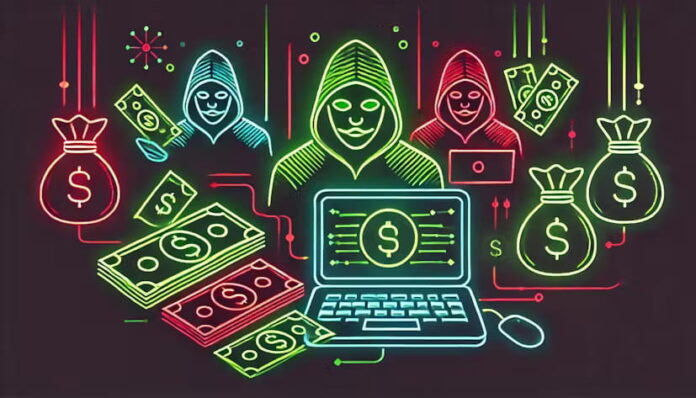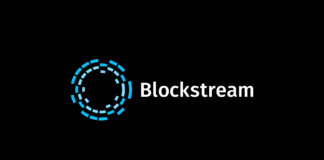In a recent high-profile incident, the blockchain security firm CertiK found itself at the center of a heated dispute with the renowned cryptocurrency exchange Kraken. This case sheds light on the complex dynamics between security researchers, exchanges, and the broader cryptocurrency community, raising important questions about the role of whitehat hackers and the responsibilities of exchanges in safeguarding their platforms. The incident has sparked rumors that Kraken was hacked, highlighting the importance of robust crypto security measures and smart contract audits in the decentralized finance space.
Uncovering Kraken’s Vulnerabilities
CertiK, a leading blockchain auditing firm in the crypto security space, made a startling discovery: the Kraken exchange’s deposit system was susceptible to a critical vulnerability that could have resulted in the loss of hundreds of millions of dollars. Through a comprehensive investigation and continuous testing, CertiK identified several key weaknesses in Kraken’s defense system, including the ability to forge deposit transactions, withdraw forged funds, and bypass Kraken’s risk control mechanisms.
Exploiting the Deposit System Vulnerability
The CertiK team found that Kraken’s deposit system was unable to distinguish between different internal transfer states, allowing malicious actors to potentially forge deposit transactions and credit their accounts with millions of dollars worth of cryptocurrency. This discovery highlighted a fundamental flaw in Kraken’s security infrastructure, putting the exchange and its user funds at significant risk of balance inflation and stolen funds. The vulnerability could have enabled bug exploitation on a massive scale.
Bypassing Withdrawal Limits and Risk Controls
Further testing revealed that the forged funds could be easily withdrawn from Kraken accounts, often in large withdrawals exceeding $1 million (or approximately 5 million AUD to USD), without triggering any alerts or risk control measures from Kraken’s security operation team. This alarming finding suggested that Kraken’s asset protection mechanisms were severely compromised, leaving the exchange vulnerable to large-scale theft and financial losses.
Kraken’s Delayed Response
Despite the severity of the vulnerabilities identified, Kraken’s response was initially slow. It was only after CertiK formally reported the incident as a critical bug and classified it as “Critical” that the exchange took action, locking the test account and attempting to address the security lapse. The delayed response raised concerns about how safe is Kraken and the effectiveness of its bug bounty program.
Certik’s Transparency and Commitment to the Community
In the spirit of transparency and their dedication to the Web3 community, CertiK chose to make the details of this incident public through vulnerability disclosure. The security firm provided a comprehensive timeline of events, outlining the discovery of the vulnerabilities, the subsequent interactions with Kraken, and the exchange’s threatening response towards CertiK employees. CertiK’s actions align with the principles of ethical hacking and responsible bug bounty reporting.
Defending Whitehat Hackers
CertiK firmly asserted that their actions were those of responsible white hat hackers, aiming to identify and address critical security threats for the benefit of the broader cryptocurrency ecosystem. The firm urged Kraken to cease any threats against its employees and to work collaboratively to safeguard the future of Web3. CertiK’s stance highlights the important role of bug bounties and white hat hackers in enhancing DeFi security.
Addressing Community Concerns
The revelations from CertiK sparked a mixed reaction from the crypto community, with the incident making headlines in crypto news outlets. While some users expressed support for the security firm’s actions, others were critical, accusing CertiK of engaging in extortion or irresponsible behavior. CertiK addressed these concerns, emphasizing the importance of transparency and the need for exchanges to take security threats seriously to prevent crypto hacks.
The Implications for Cryptocurrency Exchanges
The CertiK-Kraken incident underscores the pressing need for cryptocurrency exchanges to prioritize robust security measures and foster a constructive relationship with the security research community. This case highlights the challenges exchanges face in maintaining the delicate balance between protecting their platforms and acknowledging the valuable contributions of white hat hackers.
The Importance of Proactive Security Measures
The discovery of the vulnerabilities in Kraken’s systems serves as a wake-up call for the broader cryptocurrency industry. Exchanges must adopt a proactive approach to security, regularly conducting comprehensive audits, implementing rigorous risk control mechanisms, and engaging with the security research community to identify and address potential weaknesses. Proactive measures are essential to prevent incidents like the rumored Kraken hack and maintain user trust.
The Role of Whitehat Hackers
The incident also sheds light on the critical role of white hat hackers in the cryptocurrency ecosystem. These security researchers play a vital part in uncovering vulnerabilities, helping exchanges and projects strengthen their defenses, and ultimately enhancing the overall security of the Web3 space. Exchanges should embrace a collaborative approach, fostering open communication and establishing fair bug bounty programs to incentivize responsible disclosure, similar to the Hayward bounty program.
The Need for Transparency and Accountability
The CertiK-Kraken dispute highlights the importance of transparency and accountability in the cryptocurrency industry. Exchanges must be willing to openly acknowledge security incidents, engage with the community, and demonstrate a commitment to addressing vulnerabilities in a timely and constructive manner. This level of transparency not only builds trust but also helps to strengthen the resilience of the entire ecosystem and prevent illicit activity.
The Future of Cryptocurrency Security
As the cryptocurrency industry continues to evolve, the importance of robust security measures and the collaboration between exchanges and the security research community will only become more paramount. The CertiK-Kraken incident serves as a powerful reminder of the challenges and opportunities that lie ahead, underscoring the need for a proactive and collaborative approach to safeguarding the future of Web3.
Advancing Cybersecurity Practices
Moving forward, the cryptocurrency industry must prioritize the advancement of cybersecurity practices, embracing innovative technologies, and fostering a culture of continuous improvement. Exchanges should invest in cutting-edge security solutions, stay abreast of emerging security threats, and actively participate in industry-wide initiatives to enhance the overall security posture of the ecosystem.
Strengthening Partnerships with Security Researchers
Equally important is the need to strengthen the partnership between exchanges and the security research community. By establishing clear and fair bug bounty programs, exchanges can incentivize white hat hackers to identify and report vulnerabilities, ultimately contributing to the long-term resilience of the cryptocurrency ecosystem. Collaborative efforts can help prevent incidents like the alleged Kraken hack and protect user funds.
Promoting Transparency and Accountability
Finally, the industry must continue to emphasize the importance of transparency and accountability. Exchanges should be willing to openly acknowledge security incidents, collaborate with researchers, and demonstrate a commitment to addressing vulnerabilities in a timely and effective manner. This level of transparency not only builds trust but also helps to drive the ongoing evolution of the cryptocurrency industry’s security practices.
Conclusion
The CertiK-Kraken incident serves as a poignant reminder of the critical importance of cybersecurity in the rapidly evolving cryptocurrency landscape. As the industry continues to grow, the need for robust security measures, collaborative partnerships, and a commitment to transparency will only become more pressing. By embracing these principles, the cryptocurrency ecosystem can strengthen its defenses, foster a culture of trust, and pave the way for a more secure and prosperous Web3 future. Incidents like the rumored Kraken hack underscore the vital role of blockchain auditing firms like CertiK in identifying and responsibly disclosing vulnerabilities to protect user funds and maintain the integrity of the cryptocurrency ecosystem.
Disclaimer: The information provided in this article is for informational purposes only and does not constitute financial advice. Investing in cryptocurrencies involves risks, and readers should conduct their own research and consult with financial advisors before making investment decisions. Hash Herald is not responsible for any profits or losses in the process.













